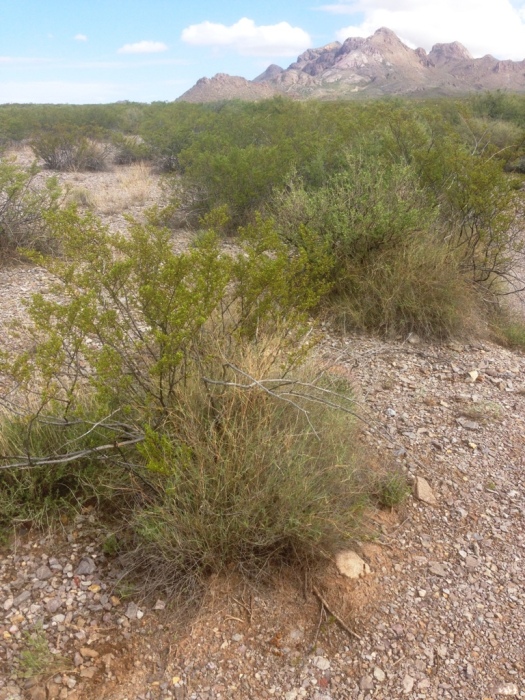I hear so many odd things, that double-checking is in order.
There are many ranchers and ranching interests in my agricultural university town, plus from western Texas to Arizona. Many of them and even our academics state how Creosote Bush poisons the soil under the live canopies so other plants won’t grow – a process my 1980’s college courses called allelopathy.
Of course, there are many square miles of creosote bush scrub in the 3 warmer-winter deserts in the southwest US.
Enjoy some of the many exceptions to that I see every outing:
Many Opuntia macrocentra grow under creosotes.
.
Parthenium incanum is often seen under creosotes, too.
.
Many thriving Echinocereus coccineus enjoy their shelter.
.
Cylindropuntia leptocaulis isn’t being poisoned, either.
.
Ferocactus wislizeni is just fine, though so fine that it will eventually heave this happy creosote evil scourge out of the ground!
.
Some Coryphantha macromeris are seen under creosotes here, like many along roadsides between Doña Ana and Hudspeth counties.
No stress from poisoning here, and this is an old cactus.
.
Young Flourensia cernua popping up in the shelter of creosotes.
.
And a grass: one of the most drought-tolerant grasses of high ornamental value I know of, Muhlenbergia porteri. I see it under at least half of creosotes from my car, each drive on I-25!
My guess is cows just don’t eat any of those plants, including the last one – a grass.
That I believe, along with geography and climate denial plus heritage, is what drives the hatred of creosote and all things cattle don’t eat.
Some of those plants can be found under most Larrea tridentata in open space, range land, or the hundreds of miles I see creosotes – from Albuquerque into the Big Bend.
To remain fair, I also don’t recall one grama grass under creosotes – i.e. a favorite bovine buffet plant – where I would think they should be growing in this climate and soil type, namely ever-tough Bouteloua eriopoda. Though perhaps in range land, cattle have effectively eaten so many gramas, that little seed remains in vast areas to germinate under creosotes’ protection?
.
Back to allelopathy: that process makes complete sense with the oils in creosote bushes or other species like walnuts (Juglans spp.), when foliage and other plant parts contact with the soil under their canopies year after year. I do not deny that at all.
But I do doubt allelopathy affects all or most plants, except some plants the ranchers want for their cattle.
Taken to the next level, at more than one lecture I’ve attended over the years, not only have I heard how creosotes poison the soil, but that gets expanded to creosote causing desertification in areas that would otherwise be grasslands. Some of you remember past blog posts on how some people have a religious belief how desert grassland is really prairie, the desert pavement on our soils exists somehow in spite of grasses’ organic matter, the much greater rainfall near our mountains isn’t why those areas still have grasses and aren’t so desertified, and so on. Knowing some of the latter, I assure you they don’t care for the people in cowboy hats and big trucks much.
This vilifying of creosotes is just another form of how things in the desert are just not right, because they are not the plants many want to see.
.
The Las Cruces area isn’t as dry as a desert gets, nor is it as wet. Plants grow under creosotes or don’t for many reasons. Since drought is universal in all deserts, that’s a doubtful reason.
One thing is sure: a concern for environmental issues is shallow until one quits projecting their preferences onto what “they want to see”, instead of knowing “what should be” and then working with “what is”.
Bovines are fine and part of my diet. But desert isn’t steer habitat anymore than our valley areas are habitat for pecans and cotton!
I’ll close out with a 2013, post-first-frost look of Muhlenbergia porteri – happily growing under miles of Larrea tridentata.
7/23/17 weather: 89 / 67 / 0.02













